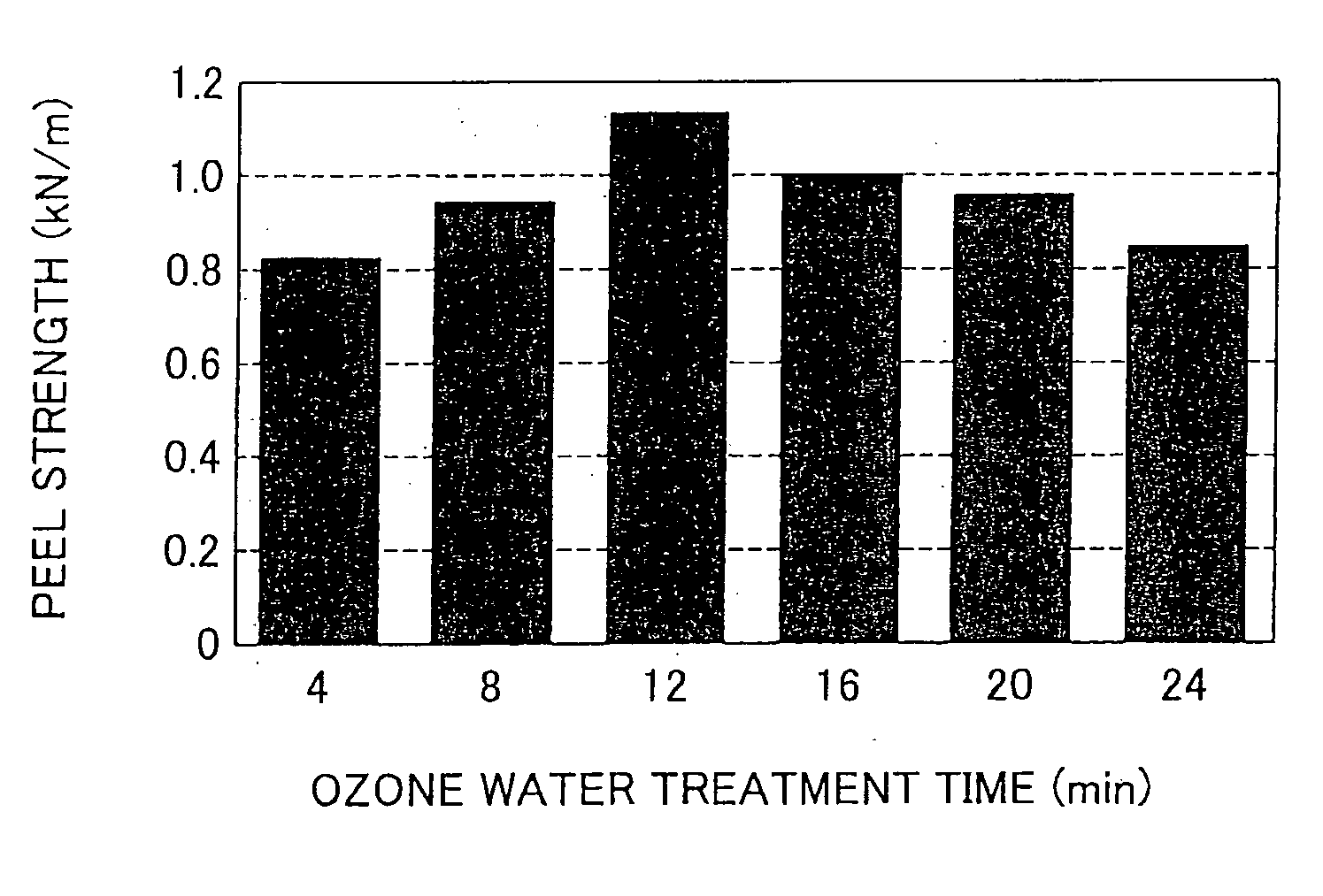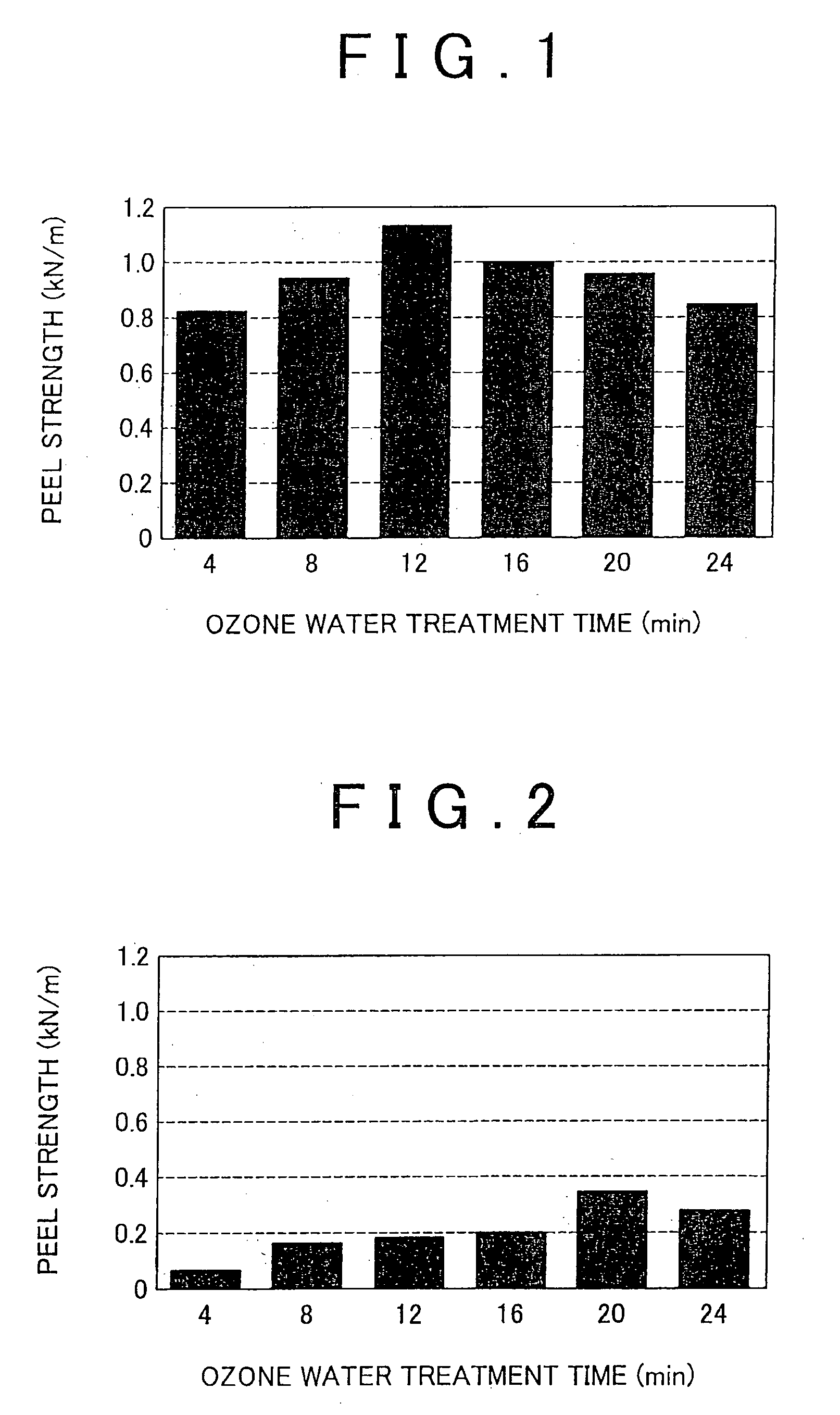Resin board to be subjected to ozone treatment, wiring board, and method of manufacturing the wiring board
a technology of ozone treatment and resin board, applied in the field of resin board, can solve the problems of adverse effects on physical properties and increased cost, lack of electrical conductivity and low hardness, and increase cost, so as to ensure the adhesion strength, shorten the time, and improve the effect of activation
- Summary
- Abstract
- Description
- Claims
- Application Information
AI Technical Summary
Benefits of technology
Problems solved by technology
Method used
Image
Examples
example 1
[0059](1) Half-curing Heat Treatment Step: A resin board consisting of aromatic cyanate compound (“BA230S75” manufactured by LONZA Japan Ltd.), resin (“828EL” manufactured by Japan Epoxy Resins Co., Ltd.) containing aromatic epoxy resin, spherical silica and methyl ethyl ketone as a solvent, was prepared and heated at 150° C. for 30 min., into a half-cured state.
[0060](2) Ozone Treatment Step: The resin board in the half-cured state was subjected to ozone treatment in which the board was immersed in an ozone solution containing 40 PPM of ozone, and held in the ozone solution at room temperature for 4 min. As a result of analyses of the surface of the resin board before and after the ozone treatment step with FT-IR (Fourier Transform Infrared Spectrometer), absorption peaks derived from carbonyl groups (—C═O) and hydroxyl groups (—OH) were observed on the surface of the resin board after the ozone treatment step.
[0061](3) C / C Treatment Step: The resin board obtained after the ozone t...
example 2-example 6
[0068]Printed wiring boards of Examples 2 to 6 were obtained in substantially the same manner as that of Example 1, except that the duration of time that the board was immersed in the ozone solution in the ozone treatment step was 8 min., 12 min., 16 min., 20 min. and 24 min., respectively.
PUM
 Login to View More
Login to View More Abstract
Description
Claims
Application Information
 Login to View More
Login to View More - R&D
- Intellectual Property
- Life Sciences
- Materials
- Tech Scout
- Unparalleled Data Quality
- Higher Quality Content
- 60% Fewer Hallucinations
Browse by: Latest US Patents, China's latest patents, Technical Efficacy Thesaurus, Application Domain, Technology Topic, Popular Technical Reports.
© 2025 PatSnap. All rights reserved.Legal|Privacy policy|Modern Slavery Act Transparency Statement|Sitemap|About US| Contact US: help@patsnap.com


